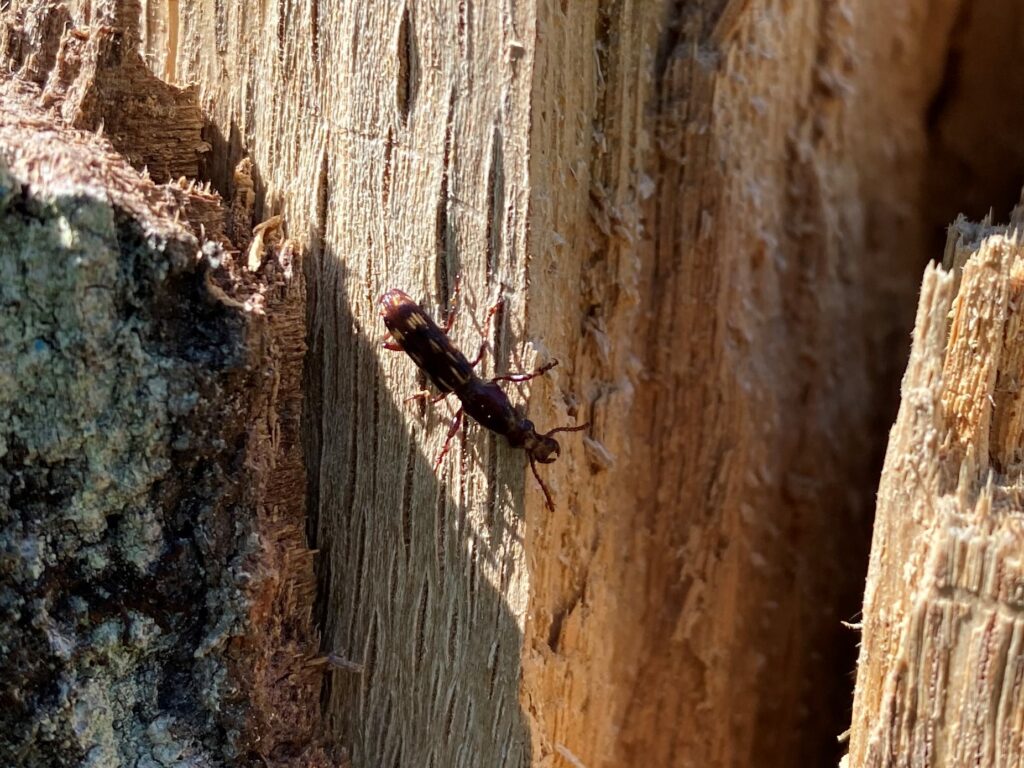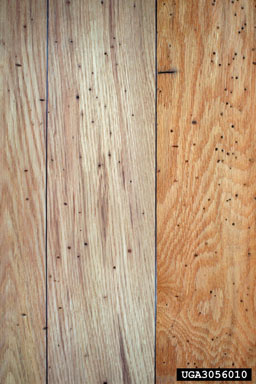By Linda Williams, DNR Forest Health Specialist, Woodruff, Linda.Williams@wisconsin.gov or 920-360-0665
Oak timberworm, Arrhenodes minutus, is a primitive weevil that can cause defects and degrade in red and white oak timber. They can also infest elm, poplar and beech. Egg-laying females will seek out trees that are damaged, wounded, nearly dead or recently dead. After the eggs hatch, the larvae bore across the grain through the tree then “U-turn” back across the grain to the point of origin, taking two or three years to complete their life cycle and creating a lumber defect called a wormhole. When infested wood is split for firewood, the weevils may emerge in homes or garages if they had already pupated when the firewood was split.

Male oak timberworm on a Northern red oak that was damaged in a storm.
These primitive weevils do not look like the weevils you are probably used to seeing. Instead of a downward curved rostrum, or beak, with mouthparts at the very end, female primitive weevils have straight mouthparts while the males have regular mandibles and do not have a snout at all. Primitive weevils will also have straight antennae, while most weevils have antennae with an “elbow.” Another interesting difference is that primitive weevil larvae have legs, while true weevil larvae do not.
Keeping trees healthy and avoiding wounding and removing severely stressed or recently dead trees will minimize the risk of attack from this insect.

Defects in oak lumber caused by oak timberworm. Photo by James Solomon, USDA Forest Service, Bugwood.org
